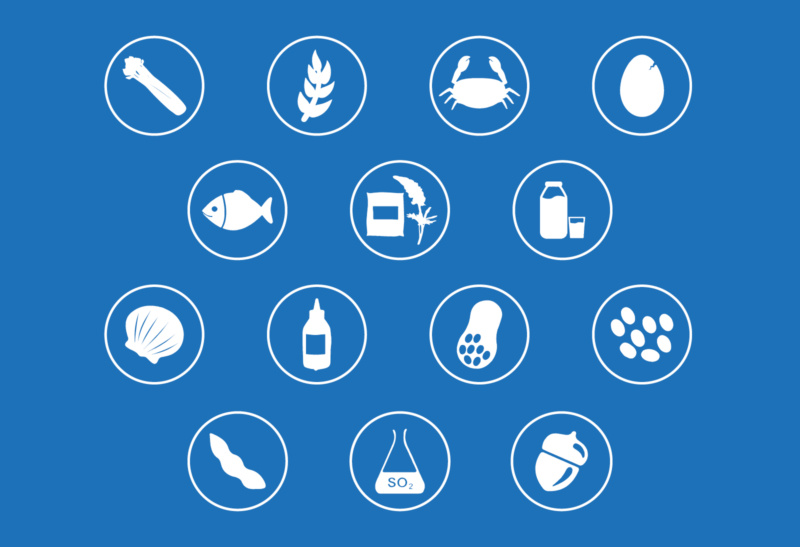So in my blog, I am going to share with you the steps we’ve been taking at bartlett mitchell to offer climate-friendly menus.
Focus on seasonality
It’s clear that expectations are high for us all to make better choices, and so for #bmfamily the focus continues to be about seasonality, as well as how we minimise our impact. Decisions we make about suppliers and produce range from consideration of food miles, to ensuring the growers and pickers are paid a fair price and are not in any way linked to slavery networks.
Customers expect choice and variety, and we can be smart in the way we accommodate this. For example, offering one menu option, which can be tailored with several variations. You could serve corn fed chicken and/or roasted pepper kebabs, accompanied by a choice of cous cous, a salad filled wrap, or a toasted pitta. That’s smart for us… and it gives the customer a wider range of options. We can also flex these menus with seasonality alongside availability, plus most importantly the right pricing.
Think of long-term investment in tools for the future
There are always challenges inherent in assessing and managing the environmental impact of menu choices. So we would always say it’s a good idea to think of long-term investment in the right tools for the future.
We’ve always invested heavily in systems that allow us electronic access to data that enables us to not only reflect on our buying decisions, but also to share information with customers. Suppliers play a key role in allowing caterers to have visibility of this, and there is certainly a huge cost and time investment involved in each process to get the information. The detail coming through from our suppliers is improving as demand for visibility and transparency has increased. Covid-19 has certainly slowed down this journey, but we feel it will pick up again at pace.
Having a strong relationship with suppliers is key, and collaborating with them to pull the sustainable detail through our e-system has been in the main positive, but we are reliant on their investment of time and resources to support our need. We’ve been doing this now for many years as we recognised early on the growing expectation of customers who want to know more about provenance and impact on society.
It doesn’t happen overnight sadly, however I am glad to say that Bidfood are ahead of the pack.
Consider plant-based options
Plant-based diets are certainly the latest trend to take off, even before Covid-19, and this hasn’t changed. Marketing of anti-oxidants and superfoods has taken a bit of a battering across the media from a “proof” viewpoint.
Non-dairy in our coffee bars has taken off firmly now, and for a while we’ve offered many different alternatives to cow’s milk. At some of our sites four or five different types of ‘mylks’ are needed, including almond milk and oat milk.
We actually see nuts and seeds as a great afternoon slump boost, as our customers are mainly blue chip or corporate office types who need slow-release energy. So, we make sure it’s not all about afternoon chocolate cake, and offer food groups that give a natural boost when needed. For us, hero ingredients are all about being natural and as close to the point of harvest as possible. Keep it simple has always been bartlett mitchell’s motto!
Plant-based is now very much more mainstream, and we expected plant-based days to certainly increase as our customers look for these options at both breakfast and lunch-time. Supper can be more ’old school’ with a meat-based meal. It’s a great balance that many of us can achieve and are achieving.
Measure your carbon footprint
As members of Planet Mark for the last three years (and over ten years working with the Sustainable Restaurant Association), we see words like ‘carbon footprint calculations’ regularly referred to. With Planet Mark, we measure our CO2 impact per head-office team member, and year on year look at ways to improve this measurement. Obviously over the last year our CO2 impact has greatly reduced due to less activity.
The question for me is whether customers actually want carbon labelling, as it’s my belief that only a very small number of them may understand this complex information. Our customers don’t ask us about this, they ask about seasonality, UK heritage or provenance, and food miles. It may be that carbon calculations are the next chapter for caterers, but again the investment is huge and with Natasha’s Law and the Calorie Labelling Regulations around the corner, this would be a real challenge.
Reduce your food waste
At bartlett mitchell, food waste has long been on the agenda, as it is for food service companies generally, since WRAP measured the incredible size of the food that is wasted in the UK in terms of its landmass.
But reducing food waste and measuring progress can be a real challenge operationally, if people are in the habit of using the wrong bins. Not to mention, we’re all reliant on waste partners to weigh food waste separately from general waste and report on it.
We’ve worked with WRAP and were early supporters, signing up to their waste programme way back. My mantra has always been what gets measured gets monitored, so we’ve created systems that collate food waste data. This helps us see on a daily basis how wasteful our menu is, and we make subtle changes to reduce this element, or get creative with previously unusable foods e.g. turning lemon peel into citrus pickles, or cauli leaves into a glorious tasty soup.
Our WASTED programme sees chefs improve their knowledge and skills in this area and has been very successful. The subject of recycling bins and signage is certainly over-complicated as wherever you go it’s different, and mostly not clear to the customer who will often get it wrong. I’ve seen bin monitors show customers where to put their waste after having lunch, and feedback on this was mixed. Many customers took offense and felt patronised, but others actually embraced improving their knowledge. The key is make it simple and clear or we will never get it right!
We always suggest that it’s important to do your homework and don’t try to offer everything. Make sure your menu doesn’t create masses of food waste, and understand your customers, as they are the greatest guide to what’s ‘hot’ and what sinks on a menu.
My key takeaways…
At the end of the day with any initiative you have, you need your team’s buy-in. At bartlett mitchell, we have our ‘green bees’ who work closely with purchasing, and all of our teams.
The other key point for me, is not to try to change everything at the start. Base your strategy on what’s important to not only your company, but also to your customers, and make sure you communicate it!



